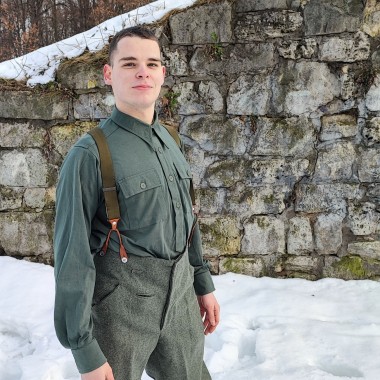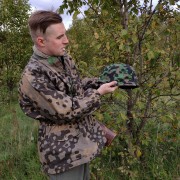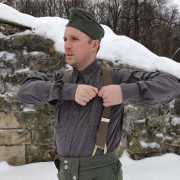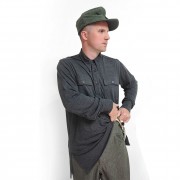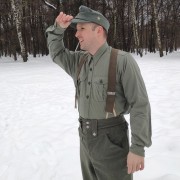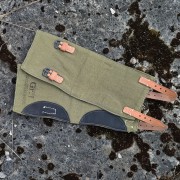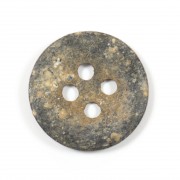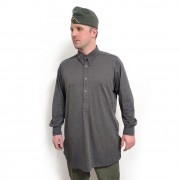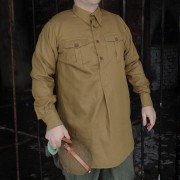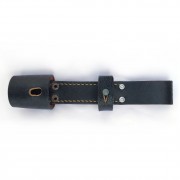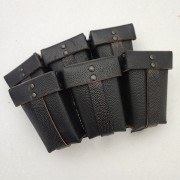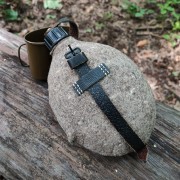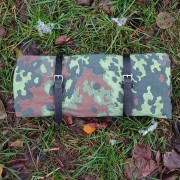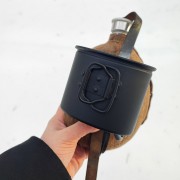How to choose the size?
You should take another shirt that fits you well. Lay it flat to the floor and make measurements using flexible ruler. The first, shoulder width (along the horisontal shoulder seam where shoulder straps should be, and behind the neck). This measurement is a key measurement, others depend on it. We give you also sleeve lenght and neck around for the information.
| Russian size | Shoulders | Neck around | Sleeve |
| 46 | 44 | 41 | 68 |
| 48 | 45 | 42 | |
| 50 | 46 | 43 | |
| 52 | 47 | 44 | |
| 54 | 48 | 45 | |
| 56 | 49 | 46 | |
| 58 | 50 | 47 |
| Russian size | Shoulders | Neck around | Sleeve |
| 46 | 1'5" ⅓ | 1'4" ¼ | 2'2"¾ |
| 48 | 1'5" ¾ | 1'4" ½ | |
| 50 | 1'6" ⅛ | 1'5" | |
| 52 | 1'6" ½ | 1'5" ⅓ | |
| 54 | 1'6" ⅞ | 1'5" ¾ | |
| 56 | 1'7" ⅔ | 1'6" ⅛ | |
| 58 | 1'7" ¼ | 1'6" ½ |
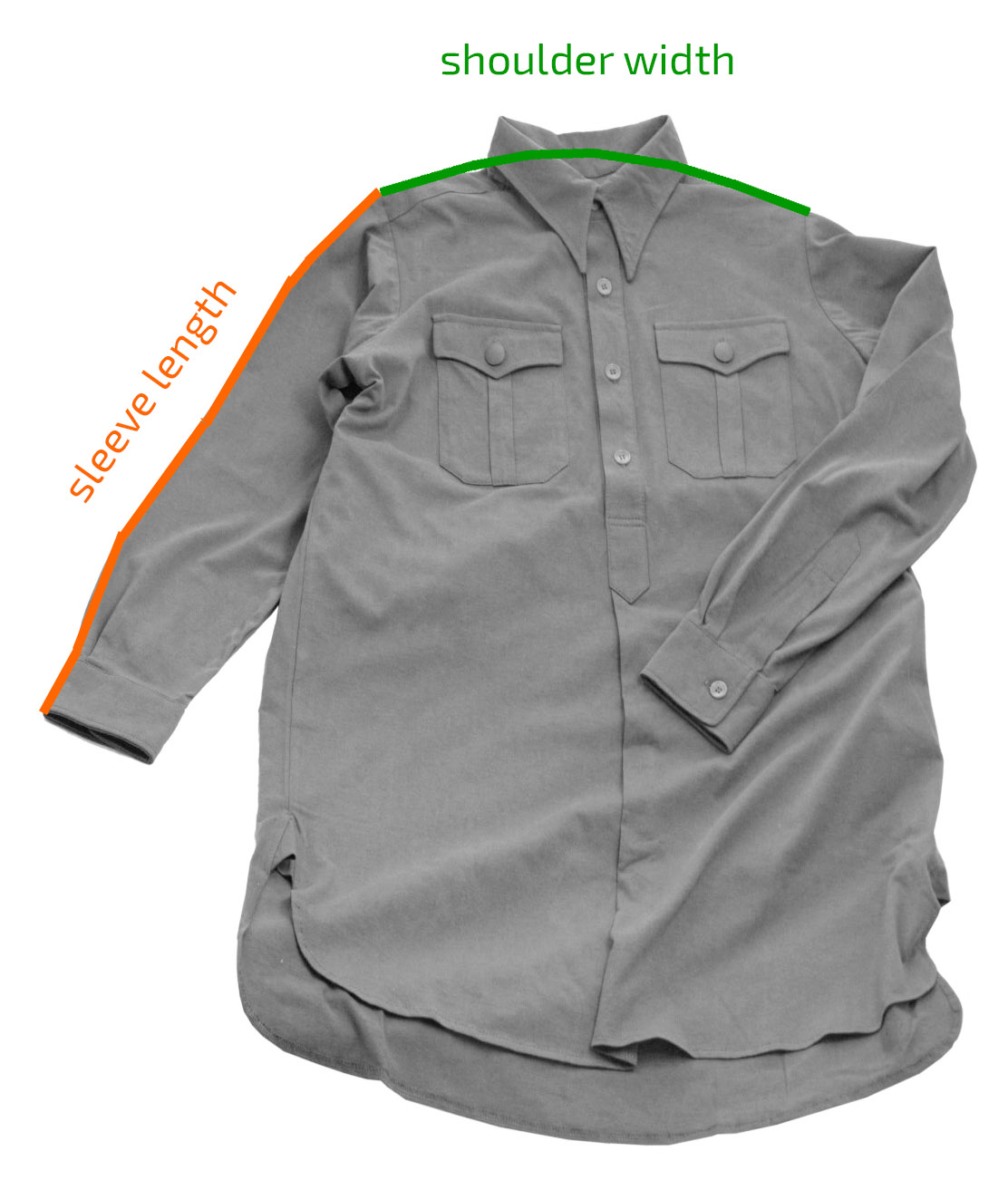
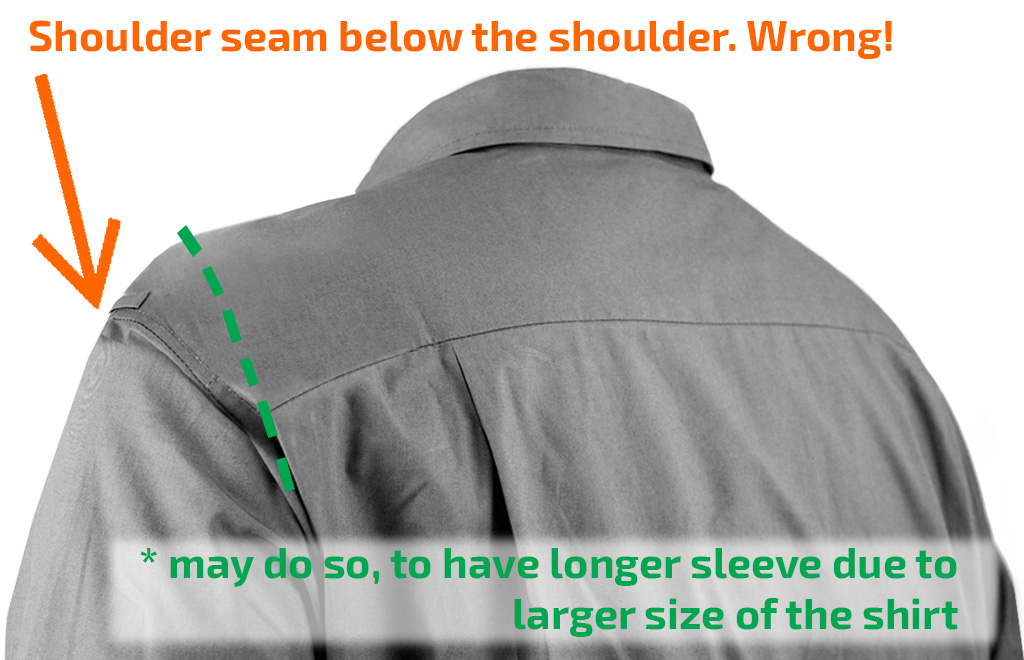
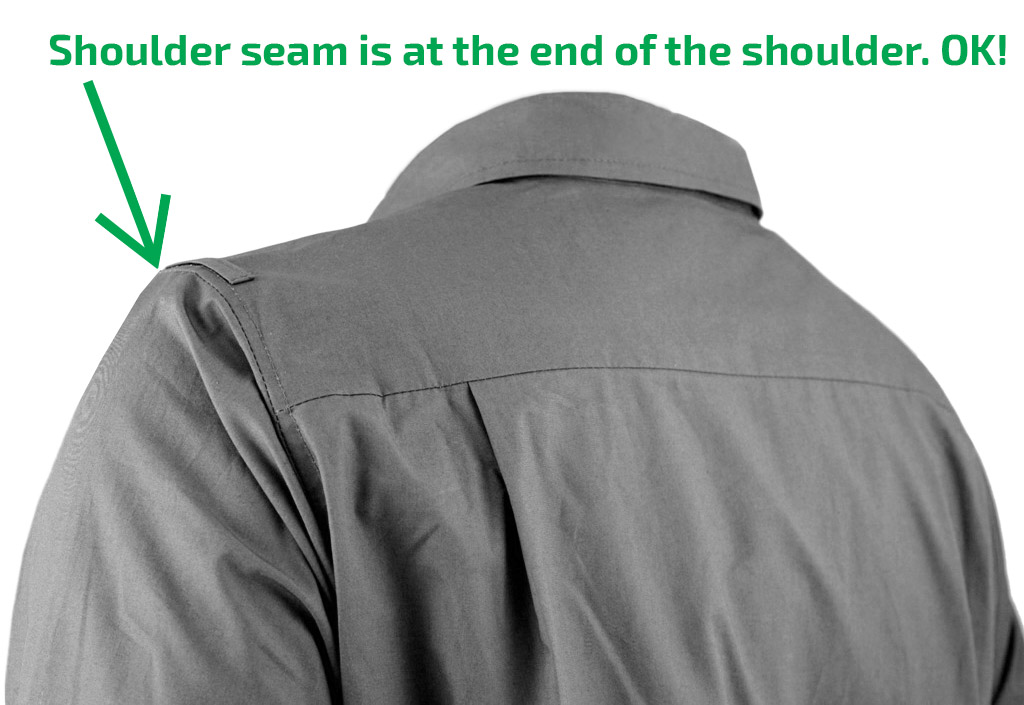
We do not produce shirts by order. Please choose a size from those in stock. If you do not understand the table, contact us, we will help you to find the size!
Description
The feldgrau-green colour shirt (cold shade of green) and olive-green colour (warm shade of green) shirts with pockets. A shade to choose from.
Breathable cotton fabric, knitted weave. The pockets are a simple rectangular shape, without a fold, with the same simple rectangular flap. This is the latest version of pockets, completely simplified, which appeared no earlier than 1944.
Features of the original shirt are well copied: the shape and size of the pockets, long back, pointed ends of the collar. Factory quality, made on professional equipment at the sewing enterprise. Our own production.
The shirt is suitable for reenactment and civilian use, especially for outdoor activities and sports, as it reliably covers the lower back (unlike T-shirts).
There is no fold on the chest. At the end of the war it was removed to simplify production and save material. Four-hole buttons are installed similar to cardboard ones, however, our copy is made of resin. Cardboard buttons were used by Germany as a cost-saving measure and were common on underwear, camouflage capes, shirts and to hold identification tapes on winter uniforms. Our copy of buttons is not destroyed by washing and can be washed in a washing machine.
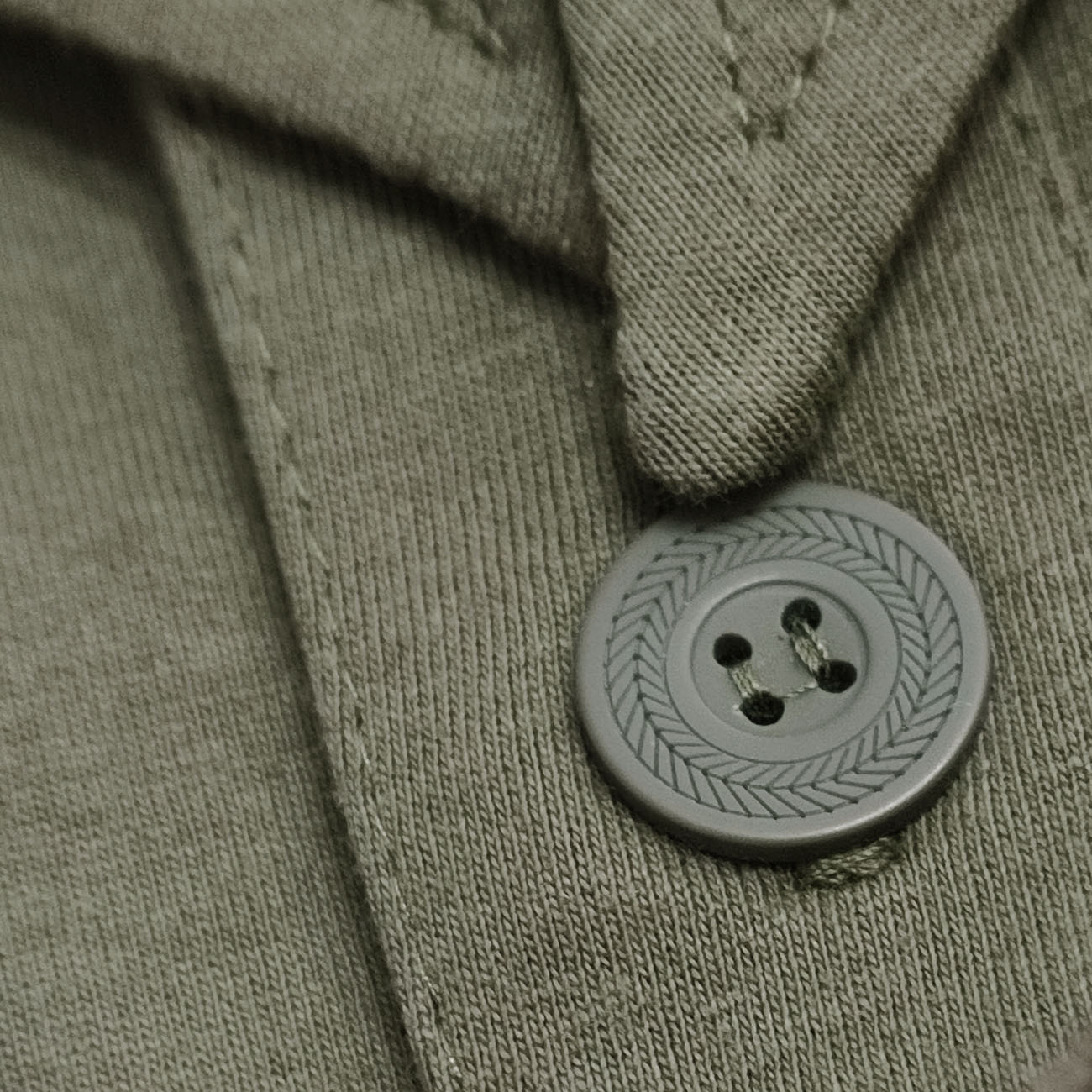
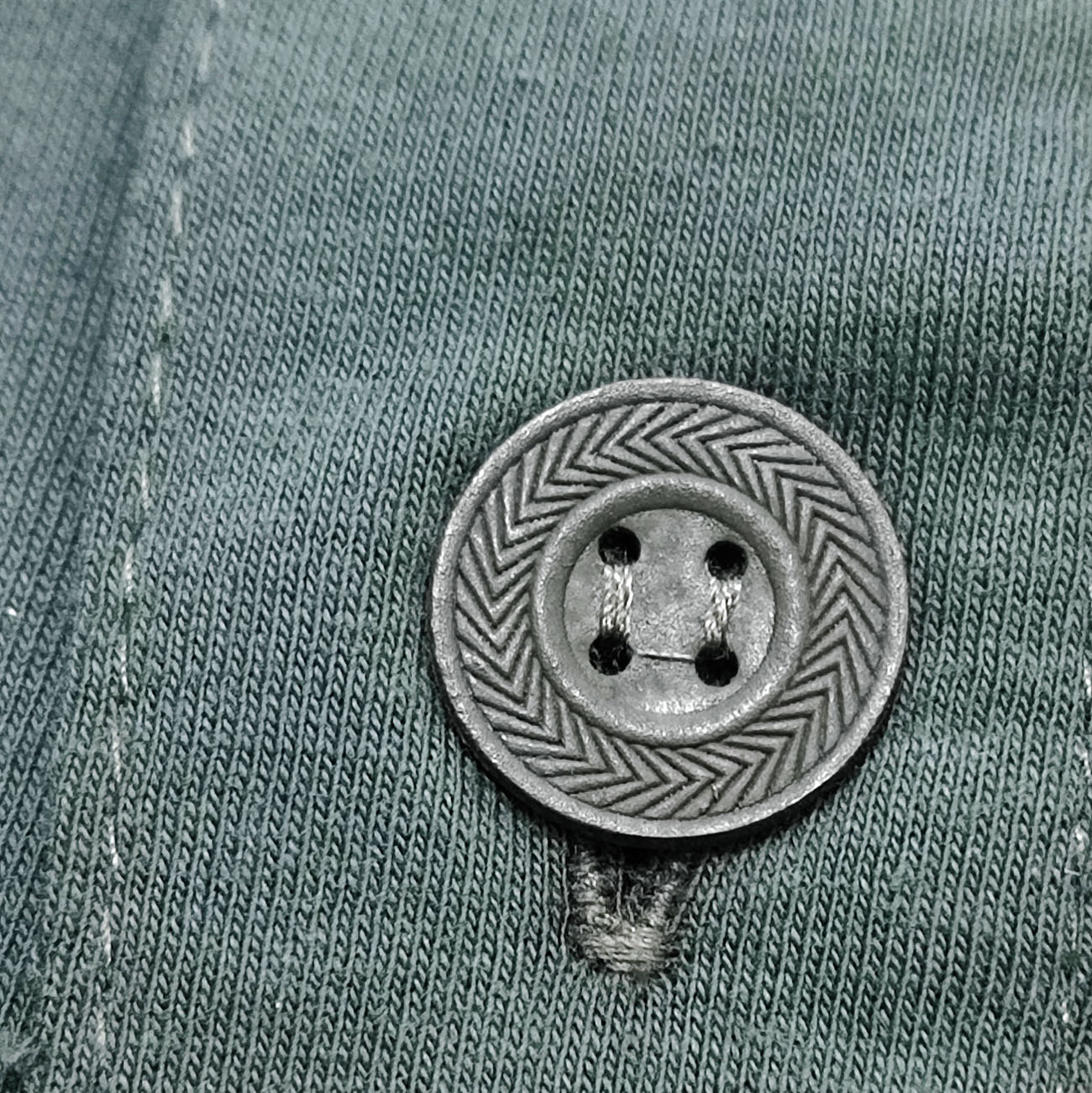
The photo shows 2 shades of the shirt: olive (left) and field gray, and also buttons.
The pockets have the same buttons. In order to save money, the Germans stopped putting “uniform” buttons on their pockets in the second half of the war.
The sleeve of this particular model is assembled into a cuff using the usual assembly (it is less beautiful, but it is faster to make; this was important for production at the end of the war). Before this, the sleeve had beautiful folds.
The shirt (on the fastener on the inside of the chest) bears the manufacturer's marks (code RB.-Nr.). There is a paper tag sewn to the collar with the inscription Trikothemd (German: knitted shirt) and the size. The label is easy to remove before using the shirt.
Historical reference.
The shirt with pockets appeared in 1943, and from that moment on, soldiers received a good alternative to a field jacket for use on breaks (on vacation, when making positions or eating). It was possible to keep things in your pockets that should always be at hand: documents, cigarettes and even a personal ID-tag (although it was officially restricted to keep the tag in a pocket).
Germany with the beginning of the war went into economy mode. They revised items of clothing and equipment that could be cheaper without losing functionality. Aluminum fittings were replaced with steel, horn buttons for cardboard and plastic. The colors also “floated”: if the main uniform (jacket, trousers, headdress) still remained within the color of “Feldgrau” (gray-green), then secondary elements, in particular shirts, could sew from any dark material.










